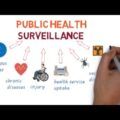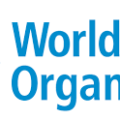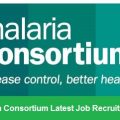The IDSR refers to a strategy and a tool that promotes rational use of resources by integrating and streamlining IDSR priority diseases (including EPDs) surveillance activities.The Integrated Disease Surveillance and Response framework makes surveillance and laboratory data more usable, helping public health managers and decision-makers improve detection and response to the leading causes of illness, death, and disability in African countries. Despite its importance, the IDSR strategy still suffers some setbacks especially in developing countries including Nigeria . The weaknesses in the IDSR strategy in most countries had resulted in failures in detecting epidemics with an attendant spread of diseases and associated human suffering, and loss of lives . The flow of information in the IDSR system in Nigeria is from the health facility to the Local Government Area (LGA), then to State Ministry of Health (SMOH) and finally to Federal Ministry of Health (FMOH). At the FMOH, data are collated and forwarded to the statistics division, analysis and feedback is carried out, as well as planning for appropriate intervention based upon the results of analysis .
In this regards, primary health care workers at the LGA level remains the mainstay of an effective and functional surveillance system. Apart from being a prerequisite for an effective surveillance system, Health Care Workers’ (HCWs) knowledge of IDSR also enhances the performance of both technical and organizational tasks . Similarly, knowledge amongst other factors has been identified to greatly influence HCWs’ attitude towards reporting of EPDs . Despite this, the knowledge of reporting requirements and responsibilities among HCWs has not been examined adequately as a cause of under-reporting.
SEE: Equity Vs Equality: Understanding The Difference
In Nigeria, the collection, collation, analysis, interpretation and dissemination of data in healthcare facilities are often unsatisfactory, and this has been attributed partly to insufficient awareness and knowledge among HCWs on the importance of this process . This is particularly important especially in the area of core IDSR activities like case definition, case detection, case registration, case reporting and data management.
Public health agencies have played a leading role in designing, developing, implementing, monitoring and evaluating IDSR since its inception in 1988. With funding from development partners the IDSR team across the world continue to collaborate with WHO/AFRO to lead the development of the IDSR framework and the design and development of the Technical Guidelines for Integrated Disease Surveillance and the IDSR Training Modules.
In addition, CDC programs across the agency reviewed and cleared summary guidelines for the framework’s 40 priority diseases, which include those diseases, syndromes, and conditions targeted by the International Health Regulations (2005). Strengthening laboratory support to surveillance also is a cornerstone of the IDSR strategy, and CDC’s global laboratory programs have provided guidance on strengthening laboratory networks, accreditation, and external quality assurance for national public health laboratories.For more information about IDSR.
Click below to download The Technical Guidelines for Integrated Disease Surveillance and Response in Nigeria
Technical Guidelines for Integrated Disease Surveillance and Response in Nigeria
Public Health Nigeria an Interdisciplinary public health movement focused on health education, advancing fair public health policies, promoting fitness, healthy diets, responsible behavior, community health and general well-being.





